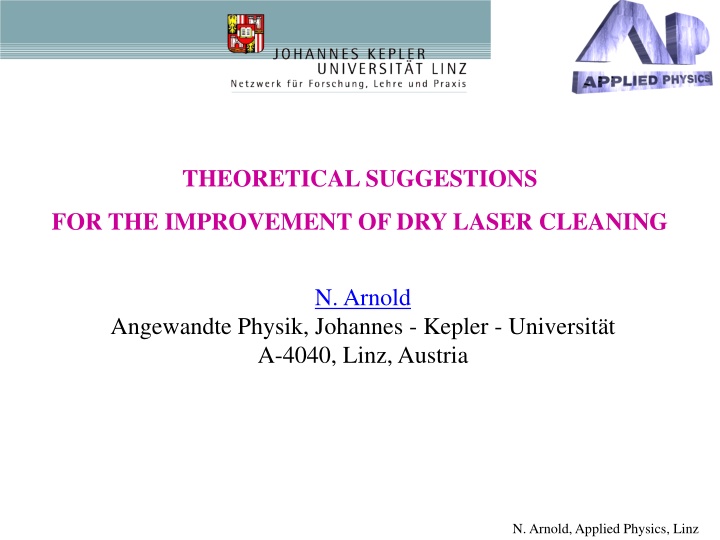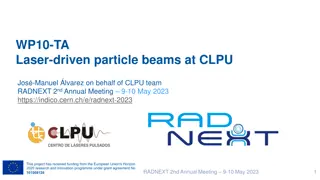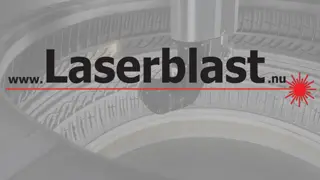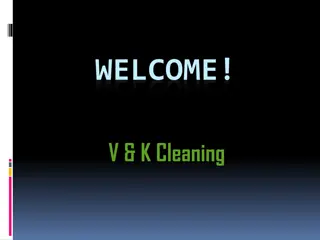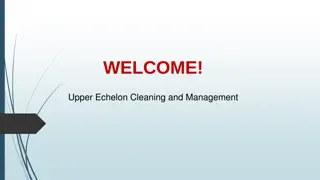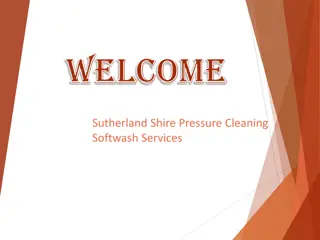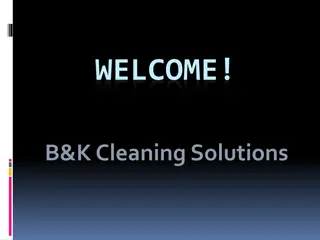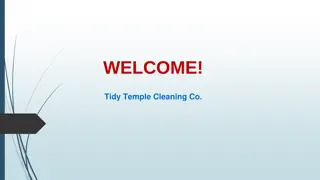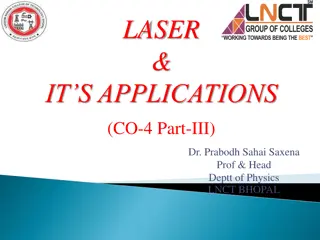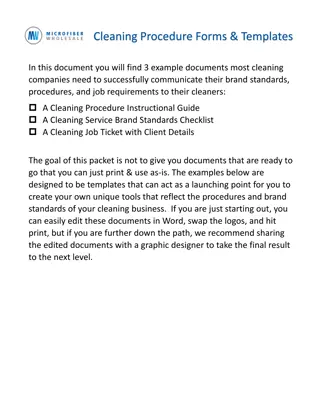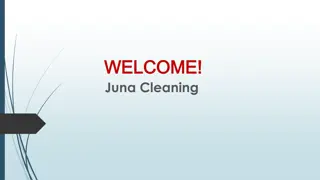THEORETICAL SUGGESTIONS FOR THE IMPROVEMENT OF DRY LASER CLEANING
Improving dry laser cleaning efficiency involves optimizing absorption length, pulse duration, and substrate characteristics. Explore qualitative ideas for damage-free cleaning in high humidity environments and small particles removal. Consider field enhancement, local ablation, and careful expansion control for effective results.
Download Presentation

Please find below an Image/Link to download the presentation.
The content on the website is provided AS IS for your information and personal use only. It may not be sold, licensed, or shared on other websites without obtaining consent from the author.If you encounter any issues during the download, it is possible that the publisher has removed the file from their server.
You are allowed to download the files provided on this website for personal or commercial use, subject to the condition that they are used lawfully. All files are the property of their respective owners.
The content on the website is provided AS IS for your information and personal use only. It may not be sold, licensed, or shared on other websites without obtaining consent from the author.
E N D
Presentation Transcript
THEORETICAL SUGGESTIONS FOR THE IMPROVEMENT OF DRY LASER CLEANING N. Arnold Angewandte Physik, Johannes - Kepler - Universit t A-4040, Linz, Austria N. Arnold, Applied Physics, Linz
Motivation and goals DLC is simple but not very efficient Theoretical understanding improved over the last years Local damage hinders DLC Discuss qualitative ideas that can help DLC Summary: Optimal absorption and pulse duration for damage-free DLC Cleaning in high RH atmosphere Cleaning by 1D laser-induced SAW N. Arnold, Applied Physics, Linz
Optimal absorption length and pulse duration for DLC We want to clean small particles by DLC Field enhancement Local ablation Damage One should not heat more than Tm One should make expansion larger But not so large, that sound slows expansion To decrease enhancement: r/ if r and Convert these considerations into formulas l N. Arnold, Applied Physics, Linz
Smaller absorption, shorter pulses or why Excimers are bad for DLC For non-absorbing particles Smaller substrate absorption (bigger l ) is better for damage-free cleaning Why? l larger with the same surface temperature Ts < Tmelting , expansion l Tdz larger larger cleaning-damage window Ts<Tm T(z) N. Arnold, Applied Physics, Linz
Small particles are interesting They are removed in the force regime ml/ 2>F0 2 r If r<< , they weakly disturb the local field (small dipole moment) Even if they do, l3D < l1D for equal parameters and Ts At best, maximum expansion till surface melting lmax 1 Tm(l +lT) Force threshold written for l: 2 ( ) r F r Almost universal constant + ( ) 0 m T l l l 1 m T ( ) / 1 2 Sizes that can be removed r + / 1 ) 2 T ( l D 1 p m - work of adhesion per area N. Arnold, Applied Physics, Linz
rla0001 rla001 rla01 rla1 rla10 rla100 laequalvot rHertz Excimer l =10 nm in m, ns: Melting free DLC 1 RADIUS r [ m] 1 . 0 Q-switch l =100 m l +l =v0 r =100 ps l =1 m + l / 1) 2 ( . 0 16 -1 10 100 m 10 m l =10 nm -2 10 1 m Excimers, Q-switched 100 nm T>Tm for l +l =v0 1 -2 -1 1 2 10 PULSE DURATION [ns] l (193,248,308) 5-10 nm l (1.06) 200 m 50 nm l (2.94) 500 cm 30 m (depending on doping and T) l (10.6) 1000 m 100 nm 10 10 10 q. stat. r<v0 FWHM c-Si: Try Er or other IR with <1 ns r/ is also better for IR Fig. 7 N. Arnold et. al. Appl. Phys. A Experiments with Nd:YAG still damage. Talk of Prof. B uerle and poster of G. Schrems N. Arnold, Applied Physics, Linz
Cleaning in vapor atmosphere Steam laser cleaning: Explosive evaporation of thin layer of liquid Removes small particles, but: poor reproducibility Spin-on, film inhomogeneities film unstable - evaporates, difficult to control, synchronization with the laser pulse Contaminates all surface Kelvin Radius RK Use capillary condensation occurs below 100% relative humidity (RH) stable liquid meniscus liquid is only where it is needed N. Arnold, Applied Physics, Linz
Capillary condensation Liquid volume (wetting) 2 K 4 V rR l r Liquid-particle surface Vl S1 1 4 S rR RK K Capillary adhesion force Independent on RH r + 2 (cos cos ) Fc 1 2 Meniscus is stable. Kelvin radius: 5 . 0 R nm = = 0 R K 1 1 1 ln( ) ln( ) RH R T RH RH l G - surface tension, - molar weight N. Arnold, Applied Physics, Linz
Let us draw it in scale RH=0.95, Kelvin radius RK=10 nm 2 2 V 50 / [ RH ] R r nm liquid 3 3 K 100 % V r n=1.4 particle There is a difference between RH=0.95 and 0.99 y y 0.2 3 2 0.1 1 Vl Vp z z 0.1 0.05 0.05 0.1 0.15 2 1 1 2 2 1 1.75 0.1 2 1.5 3 1.25 0.2 r= 150 nm r= 2.5 m 1 0.75 RH=0.99 Kelvin radius RK=50 nm y 0.5 0.25 r nm 0.06 50 100 150 200 0.04 Note that: Surface tension disappears near Tc l water molecules in the interstice may decrease adhesion by a factor of ~100 Heating up to below Tc lmay help 0.02 0.02 0.04z 0.04 0.02 0.02 0.04 0.06 r= 50 nm r= 150 nm N. Arnold, Applied Physics, Linz
How to achieve stable high RH~1:desired experimental setup saturated salt, glycerol or sulfuric acid solutions* hygrometer laser pulse thermometer entrance window barometer valve Also*: At 20 C: thermostatic reaction chamber Pb(NO3)2RH=98 CuSO4.5H2O RH=98 H2SO4: 1.05 1, RH 97.5 1 target saturated salt, glycerol or sulfuric acid solutions Experiments with different setup, RH~95%: *From: F. Restagno, PhD thesis, Lyon, 2000 Talk of Prof. B uerle and poster of G. Schrems R. C. Weast. CRC Handbook of Chemstry and Physics N. Arnold, Applied Physics, Linz
Cleaning with laser-excited 1D SAW (surface acoustic waves) SAW cleaning outside the beam Advances in theory was demonstrated Field enhancement Local ablation No light no damage Damage Interference 1D Difficult to modulate GHZ possible Recovered Resonant laser cleaning (RLC) idea N. Arnold, Applied Physics, Linz
SAW cleaning with focused pulses* 1-2 m Al2O3 on (111) Si, in air Nd:YAG-1.06 m, 10 ns,10 pulses 1-10 m Al2O3 on (100) Si, in air N2-337 nm, 10 ns, 50 pulses SAW wavelength is determined by the spot size ~ 15 m SAW is 2D and decays fast SAW has 1-2 oscillations only Cleaning of the particles outside of irradiated area, enhanced along the lines where SAW is stronger *A. A. Kolomenskii, H. A. Schuessler, V. G. Mikhalevich, and A. A. Maznev, J. Appl. Phys., 84(5) 2404 (1998) A. A. Kolomenskii, A. A. Maznev, Phys. Rev. B., 48(19) 14502 (1993) N. Arnold, Applied Physics, Linz
SAWs excited with ps-pulse interference* 180 ps, THG Nd:YAG (335 nm), Si 100 MHz frequency =0.8 easily varied up to 1-10 GHz** Many oscillations - resonance 1D propagation out of the beam area No light no damage Non-linear effects, larger acceleration Breakdown in air, universality *A. Frass, A. Lomonosov, P. Hess, V. Gusev, J. Appl. Phys., 87(7) 3505 (2000) **R. M. Slayton, K. A. Nelson, A. A. Maznev, J. Appl. Phys., 90(9) 4392 (2001) N. Arnold, Applied Physics, Linz
Advantages of 1D SAW excited by laser light interference for cleaning SAW are 1D. No fast decay, propagate out of the beam area. No light is present in the majority of area covered by SAW No local field enhancement-damage. SAW have many oscillations, suitable for testing of RLC Frequency is determined by the periodicity of interference. vSAW~vsound/ light~1-10 GHz - suitable for resonant laser cleaning (RLC). Frequency easily variedvia angle of interfering beams. Indispensable for testing and application of RLC. Smaller overall thermal load on the substrate. Non-linearity makes fronts steeper, increase accelerations. Can be excited via breakdown in the air. Material independent, suitable for structured substrates, (industry). N. Arnold, Applied Physics, Linz
Acknowledgments (discussions, ideas, pictures) Linz Prof. D. B uerle, Dr. M.P. Delamare, DI. G. Schrems, Dr. K. Piglmayer Konstanz Prof. P. Leiderer, Dr. M. Mosbacher, Dr. H. M nzer, DI. M. Olapinski Singapore Prof. B. Luk yanchuk, Prof. Y.F. Lu, Dr. M. Hong, Dr. Z. B. Wang Sydney Prof. D. Kane, Dr. S. Pleasants College Station, Heidelberg Prof. A. Kolomenskii, Prof. P. Hess, A. Maznev Funding: Austrian Science Fund (FWF), P14700-TPH EU TMR Laser Cleaning, #ERBFMRXCT98 0188 N. Arnold, Applied Physics, Linz
